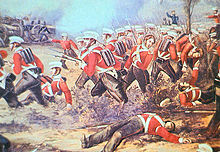
Lieutenant-General Sir Henry George Wakelyn Smith, 1st Baronet, GCB was a notable English soldier and military commander in the British Army of the early 19th century. A veteran of the Napoleonic Wars, he is also particularly remembered for his role in the Battle of Aliwal, India in 1846, his subsequent governorship of the Cape Colony, and as the husband of Lady Smith.

The First Anglo-Sikh War was fought between the Sikh Empire and the British East India Company in 1845 and 1846 in and around the Ferozepur district of Punjab. It resulted in defeat and partial subjugation of the Sikh empire and cession of Jammu and Kashmir as a separate princely state under British suzerainty.

The 15th/19th The King's Royal Hussars was a cavalry regiment of the British Army. The regiment was formed by the amalgamation of the 15th The King's Hussars and the 19th Royal Hussars in 1922 and, after service in the Second World War, it was amalgamated with the 13th/18th Royal Hussars to form the Light Dragoons in 1992.

The Battle of Sobraon was fought on 10 February 1846, between the forces of the East India Company and the Sikh Khalsa Army, the army of the Sikh Empire of the Punjab. The Sikhs were completely defeated, making this the decisive battle of the First Anglo-Sikh War.

The Battle of Aliwal was fought on 28 January 1846 between the British and Sikh forces in northern India. The British were led by Sir Harry Smith, while the Sikhs were led by Ranjodh Singh Majithia. Britain's victory in the battle is sometimes regarded as the turning point in the First Anglo-Sikh War.
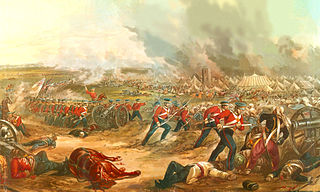
The Battle of Ferozeshah was fought on 21 December and 22 December 1845 between the British East India Company and the Sikh Empire, at the village of Ferozeshah in Punjab. The British were led by Sir Hugh Gough and Governor-General Sir Henry Hardinge, while the Sikhs were led by Lal Singh. The British emerged victorious.
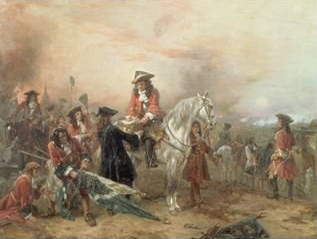
Robert Alexander Hillingford was an English painter. He specialized in historical pictures, often battle scenes.

The 14th King's Hussars was a cavalry regiment in the British Army, first raised in 1715. It saw service for two centuries, including the First World War, before being amalgamated with the 20th Hussars to form the 14th/20th King's Hussars in 1922.

William Simpson was a Scottish artist, war artist and war correspondent.

The 4th Queen's Own Hussars was a cavalry regiment in the British Army, first raised in 1685. It saw service for three centuries, including the First World War and the Second World War. It amalgamated with the 8th King's Royal Irish Hussars, to form the Queen's Royal Irish Hussars in 1958.
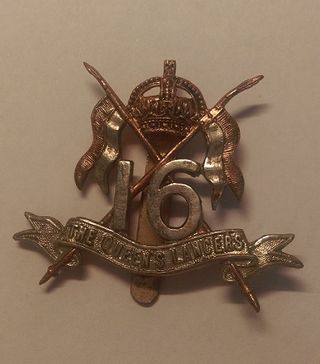
The 16th The Queen's Lancers was a cavalry regiment of the British Army, first raised in 1759. It saw service for two centuries, before being amalgamated with the 5th Royal Irish Lancers to form the 16th/5th Lancers in 1922.

The 7th Queen's Own Hussars was a cavalry regiment in the British Army, first formed in 1689. It saw service for three centuries, including the First World War and the Second World War. The regiment survived the immediate post-war reduction in forces, but following the 1957 Defence White Paper, it was amalgamated with the 3rd The King's Own Hussars, forming the Queen's Own Hussars in 1958.
The Battle of Emsdorf was fought on 16 July 1760 during the Seven Years' War at Emsdorf in present-day Hesse, Germany, between forces of British, Hanoverian and Hessian troops under the Prince of Hesse-Kassel against German troops in French service under Marechal de Camp von Glaubitz. It was part of the campaign to disrupt the French line of communications by capturing Marburg, a French supply depot.

Richard Caton Woodville Jr. was an English artist and illustrator, who is best known for being one of the most prolific and effective painters of battle scenes in the late 19th and early 20th centuries.
Godfrey Douglas Giles was a painter of horses, military scenes and battles, many experienced firsthand while on service with the British Army in India, Afghanistan, Egypt and South Africa. He produced numerous caricatures for the magazine Vanity Fair.

William Barnes Wollen was an English painter mostly known for his paintings of battle and historical scenes and sporting events.
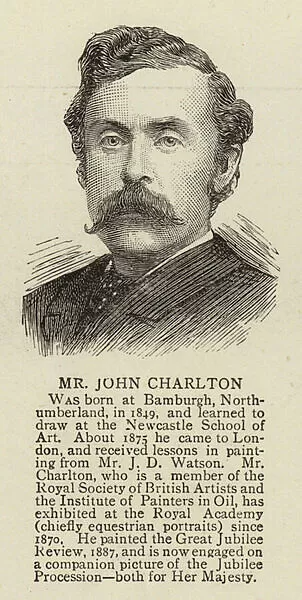
John Charlton (1849–1917) was an English painter and illustrator of historical and especially battle scenes, mainly from contemporary history.
James Prinsep Beadle (1863–1947), was an English painter of historical and military scenes. Born in Calcutta on 22 September 1863, his father was Major-General James Pattle Beadle. For three years, he studied with Legros at the Slade School in London and at the Ecole des Beaux Arts in Paris under Alexandre Cabanel; his final studies were back in London with G. F. Watts.

Orlando Norie (1832–1901), artist of military subjects, was perhaps the most prolific painter of the British army in the 19th century along with Richard Simkin. It has been estimated that Norie alone painted well over 5,000 pictures. Although his family were of Scottish descent, they had moved to the continent, and Orlando was born in Bruges, Belgium on 15 January 1832. He spent most of his working life in Dunkirk where he painted many scenes, primarily in watercolor by the firm of Rudolf Ackermann.
Lieutenant-General Sir Michael White KCB was a British Army officer. The son of a major in the 27th Dragoons, he received a commission in the same regiment in 1804. White served in India on the Sikh frontier; during the 1817 Siege of Hathras; the 1817-18 Third Anglo-Maratha War and the 1825-26 Siege of Bharatpur. From 1839 he commanded the 3rd Light Dragoons and led them in the 1842 invasion of Afghanistan for which he was appointed a Companion of the Order of the Bath.

